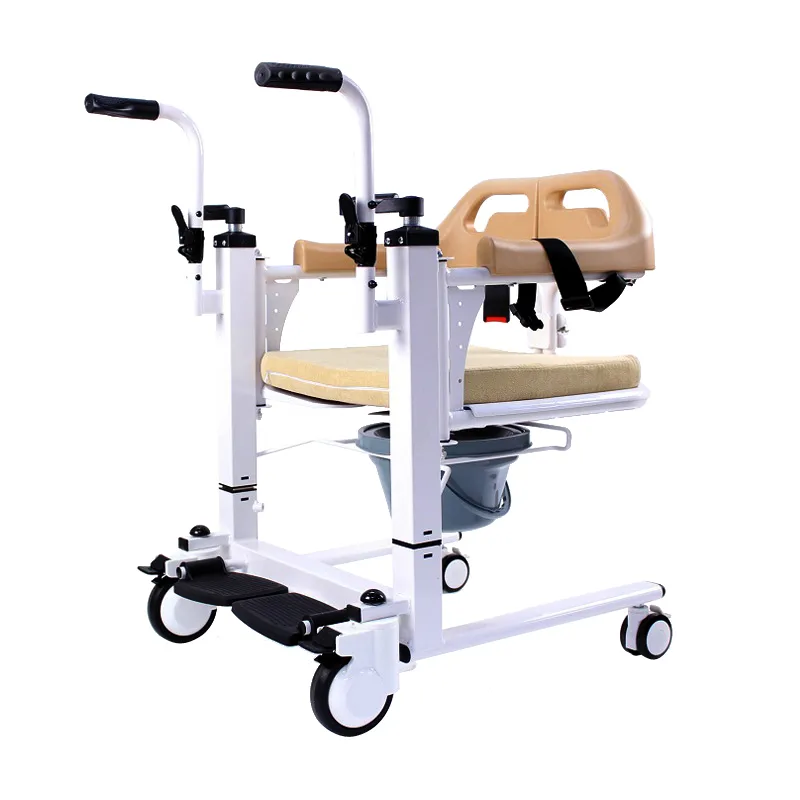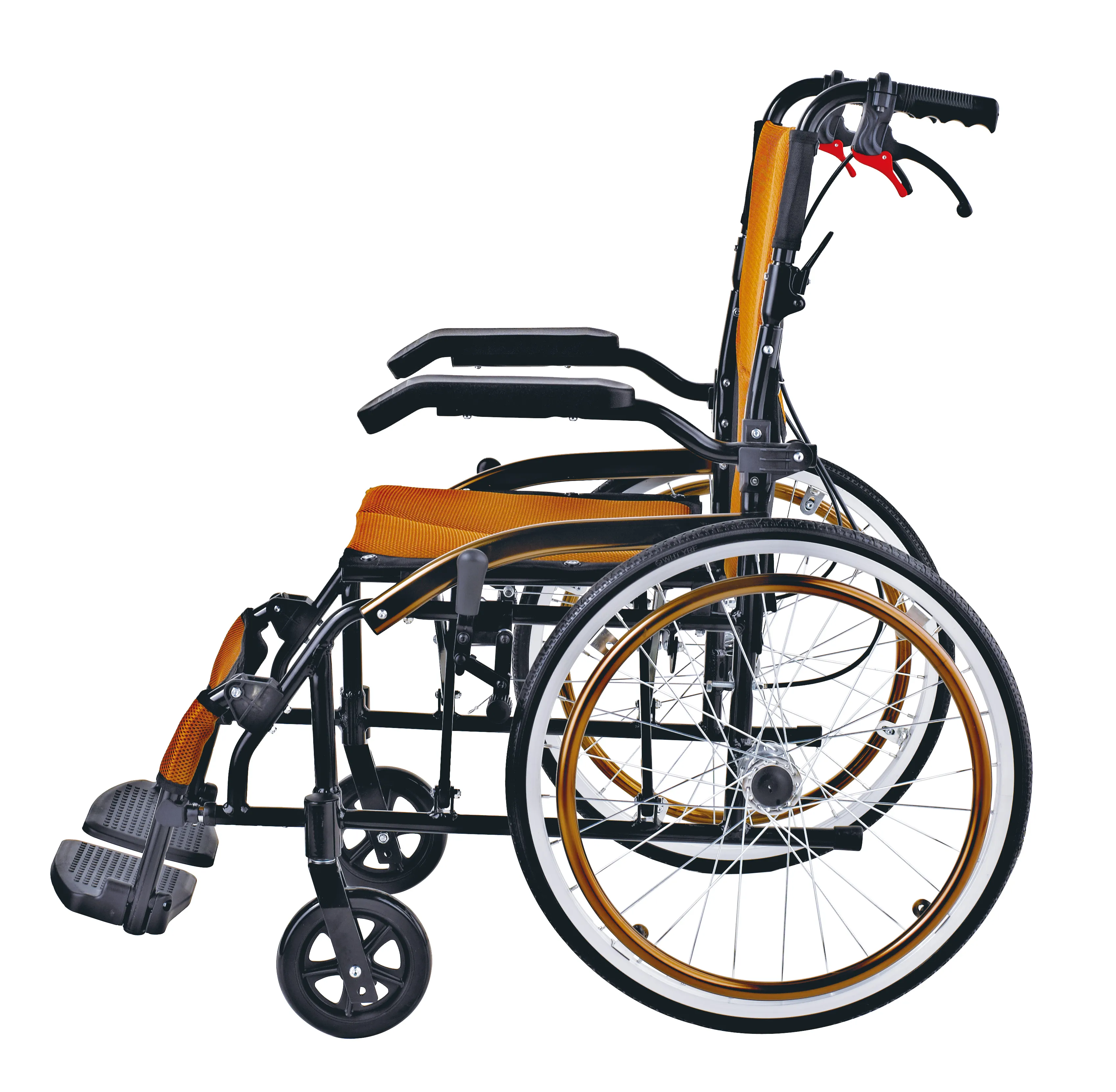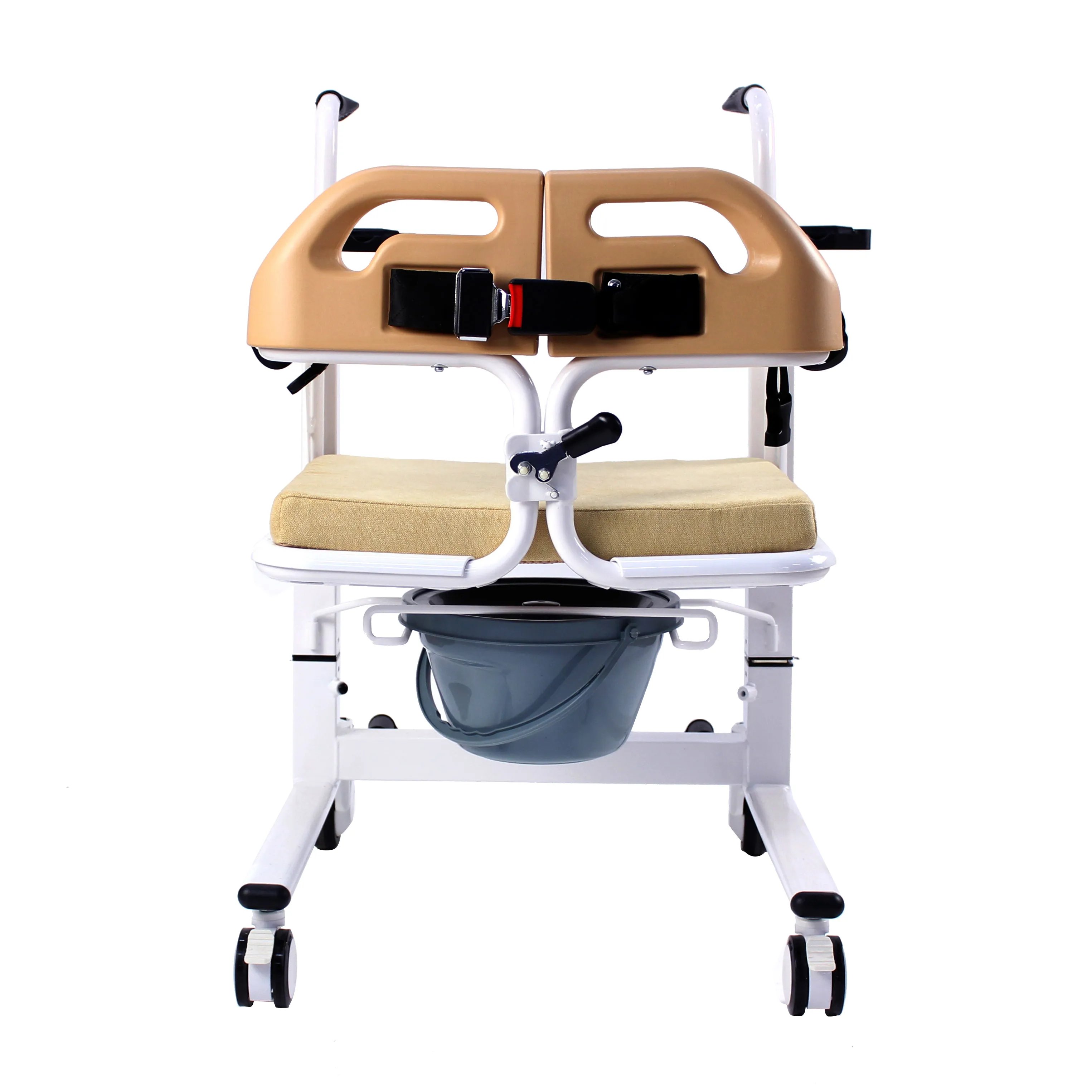In medical care and daily rehabilitation, the selection of "assistive mobility devices" is increasingly a concern for home users, nursing facilities, and hospital purchasing personnel. Among these devices, patient transfer chairs and manual wheelchairs are two widely used and often confused types.
Many consumers often ask a core question during their purchasing process: "Which is better, a transfer chair or a manual wheelchair?" However, "better" is never a definitive answer. Each has distinct design objectives, functional priorities, intended users, and usage scenarios. Failure to clearly distinguish between the two can lead to inconvenience at best and even compromise patient safety and recovery progress at worst.
This article will comprehensively answer the question, "Which is better, a patient transfer chair or a manual wheelchair?" to help readers make a more rational and professional choice.

What is a patient transfer chair?
As the name suggests, a patient transfer chair is a specialized device used to assist individuals with limited mobility over short distances. Its core purpose is to "accomplish temporary movement from a bed to a restroom, examination room, elevator, or other location with the assistance of a caregiver."
Features include:
· Compact structure and lightweight;
· Multiple brake systems and anti-tilt design;
· Some models feature toilet functions, liftable armrests, or removable backrests;
· Not suitable for extended periods or self-operation.
What is a manual wheelchair?
A manual wheelchair is a long-term seat that is moved by the user pushing the wheel rims or by someone else. It is suitable for people with long-term mobility issues, lower limb paralysis, or those recovering from surgery for daily travel or indoor mobility.
Key Features:
· Allows the patient to propel it independently;
· Most are equipped with footrests, brakes, a backrest, and cushions;
· Highly comfortable for extended rides;
· Relatively large and heavy.
Core Function Comparison: Transfer vs. Self-Mobility
Functional dimensions | Patient transfer chair | Manual wheelchairs |
| Mobility | Nursing staff push | Can be propelled independently or by someone else |
| Duration of use | Short-term (a few minutes) | Long-term use (several hours) |
| Seat comfort | General, easy to clean | High, suitable for extended sitting |
| Emergency function | Can climb stairs, has a commode | Generally lack these features |
| Daily travel | Not recommended | Can be used long-term |
Conclusion: If the user needs to sit in the device for extended periods or wishes to control the direction of travel, a manual wheelchair is more suitable. However, for temporary transfers or relocations, a patient transfer chair is more suitable.
Transfer Chairs and Manual Wheelchairs: Structural Design Differences
1. Structural Features of Patient Transfer Chairs:
·Mostly feature four small wheels for flexible steering;
·No large wheels, no self-propelling capabilities;
·Some models can ascend and descend stairs and dock with a bed;
·The seat cushion is often made of hard plastic, making it easy to disinfect and empty;
·The load capacity is generally between 100–150 kg;
·Easy to fold and store.
2. Structural Features of Manual Wheelchairs:
·Large rear wheels and small front wheels for self-propelled movement;
·Comfort features such as footrests, cushions, headrests, and armrests;
·Most are foldable and stowable, but are larger than transfer chairs;
·Often feature shock absorption systems and trunk support structures;
·Generally have a higher load capacity (over 120–180 kg);
·Various materials: aluminum alloy, steel, and carbon fiber.
Conclusion: Structurally, patient transfer chairs are lighter and more flexible, making them suitable for nursing assistance. Manual wheelchairs are more stable and comfortable, making them suitable for long-term independent activities.

Applicable Population Analysis: Who is Best Suitable for Which Type?
1. Patient Transfer Chairs Suitable for:
· Elderly Patients with Disabilities;
· Patients Who Can't Sit for Long Postoperative Periods;
· Temporary Patient Transfers (e.g., from a Hospital Bed to a CT Scan Room);
· Elderly People Who Need Short-Term Movement in Home Care Settings;
· People Living in Confined Spaces Without Elevators.
2. Patient Transfer Chairs Suitable for:
· Individuals with Lower Limb Disabilities but Upper Limb Strength;
· Individuals Who Need Daily Transportation Outdoors;
· Individuals Who Need Independent Mobility Training During Rehabilitation;
· Individuals Who Can Sedentary for Longer Periods and Have Independent Living Skills;
· Individuals Who Need to Live at Home or Travel Longer.
Conclusion: The choice of patient transfer chair should be based on the patient's self-care ability and frequency of use: Patients who are unable to care for themselves and only need short-term transfers should use a patient transfer chair; those who are partially or fully self-care and require long-term use should choose a manual wheelchair.
Application: Which is Better for Hospitals, Homes, or Outdoors?
| Scenario | More Suitable Equipment | Reasons |
Hospital Corridor/Emergency Room | Patient Transfer Chair | Fast, safe, and efficient transfers |
Home Care | Transfer Chair (Indoor) + Manual Wheelchair (Outdoor) | Optimal combination |
Elevator/Narrow Doorway | Patient Transfer Chair | Small size for easy access |
| Park, Shopping Mall | Manual Wheelchair | Easy to use for long-term transportation or self-driving |
| Going Up and Down Stairs | Specialized Staircase Patient Transfer Chair | Some models feature crawler tracks or hill-assist features |
Transfer Chairs and Manual Wheelchairs: A Comparison of Nursing Convenience and Safety
1. Nursing Advantages of Patient Transfer Chairs:
· Easy to operate, allowing one person to transfer the patient;
· Often equipped with brakes and anti-tilt devices;
· Liftable design facilitates docking with beds and toilets;
· Easier for patients to get in and out of the chair.
2. Nursing Challenges of Manual Wheelchairs:
· Requires skill to get in and out of the chair;
· Heavy, making it difficult to lift or carry up stairs;
· Risk of tipping over or loss of control if the caregiver is inexperienced;
· Higher space requirements (e.g., door width, elevator depth, etc.).
Conclusion: From the caregiver's perspective, patient transfer chairs are more labor-saving and particularly suitable for elderly family members or those with frequent transfers by caregivers.

Transfer Chairs and Manual Wheelchairs: Price and Maintenance Costs
Dimensions | Patient Transfer Chair | Manual Wheelchair |
Entry-level price | ¥1000–¥2500 | ¥800–¥2000 |
Mid-range to high-end price | ¥2500–¥8000+ | ¥3000–¥6000+ |
| Common consumables | Brake Pads, Seat Cushion, Caster Wheels | Tires, handrails, brake cables |
| Maintenance frequency | Lower | Medium to high |
It is important to note that some functional patient transfer chairs (such as those with toilets and lift rails) can cost thousands of yuan, and even lightweight carbon fiber manual wheelchairs are quite expensive. Overall:
· Patient transfer chairs are relatively inexpensive and suitable for those with limited budgets but frequent care.
· Manual wheelchairs have a long lifespan and are suitable for those who want a one-time investment with long-term benefits.
Common Misconceptions: Did You Really Choose the Right One?
Myth 1: "My elderly family member can't take care of themselves, so I have no choice but to buy a wheelchair."
Correction: In fact, patient transfer chairs are more suitable for disabled individuals, making them easier to care for and get in and out of, while wheelchairs make care more inconvenient.
Myth 2: "Patient transfer chairs are too simple and definitely not practical."
Correction: Transfer chairs are designed for "short-term, rapid movement," prioritizing efficiency and safety over comfort.
Myth 3: "Wheelchairs are universal; you can do anything while sitting."
Correction: Wheelchairs aren't suitable for specific tasks like toileting, bathing, climbing stairs, and getting in and out of bed. Transfer chairs are more specialized in these areas.

Which one is "better" depends on who is using it and how they use it
There's no definitive answer to the question, "Which is better: a patient transfer chair or a manual wheelchair?" The correct question should be: "Which is the most suitable for a specific patient population and use scenario?"
1. If you need an efficient, short-term care transfer tool, a lightweight, clearly defined patient transfer chair is recommended.
2. If your patient has a certain level of independence and needs to frequently move around or sit for extended periods, a manual wheelchair is more suitable.
Many families and institutions ultimately choose a "both" option: a patient transfer chair for short-term use at home and a manual wheelchair for outdoor mobility, complementing each other.
Before purchasing any device, understanding the patient's physical condition, the care environment, and the operator's capabilities is far more important than dwelling on brand and price.
Does Dayang Medical provide wholesale purchasing options?
Yes. As a leading wheelchair and hospital bed manufacturer in China, Dayang Medical offers wholesale purchasing and bulk order discounts for distributors, resellers, and healthcare institutions worldwide. Our factory ensures stable supply, competitive prices, and promotional deals for electric wheelchairs, commodes, walking aids, and shower chairs. Buyers benefit from customized OEM production, flexible purchasing terms, and direct factory quotes. Contact our sales team today for wholesale prices, reliable delivery, and China factory support.










